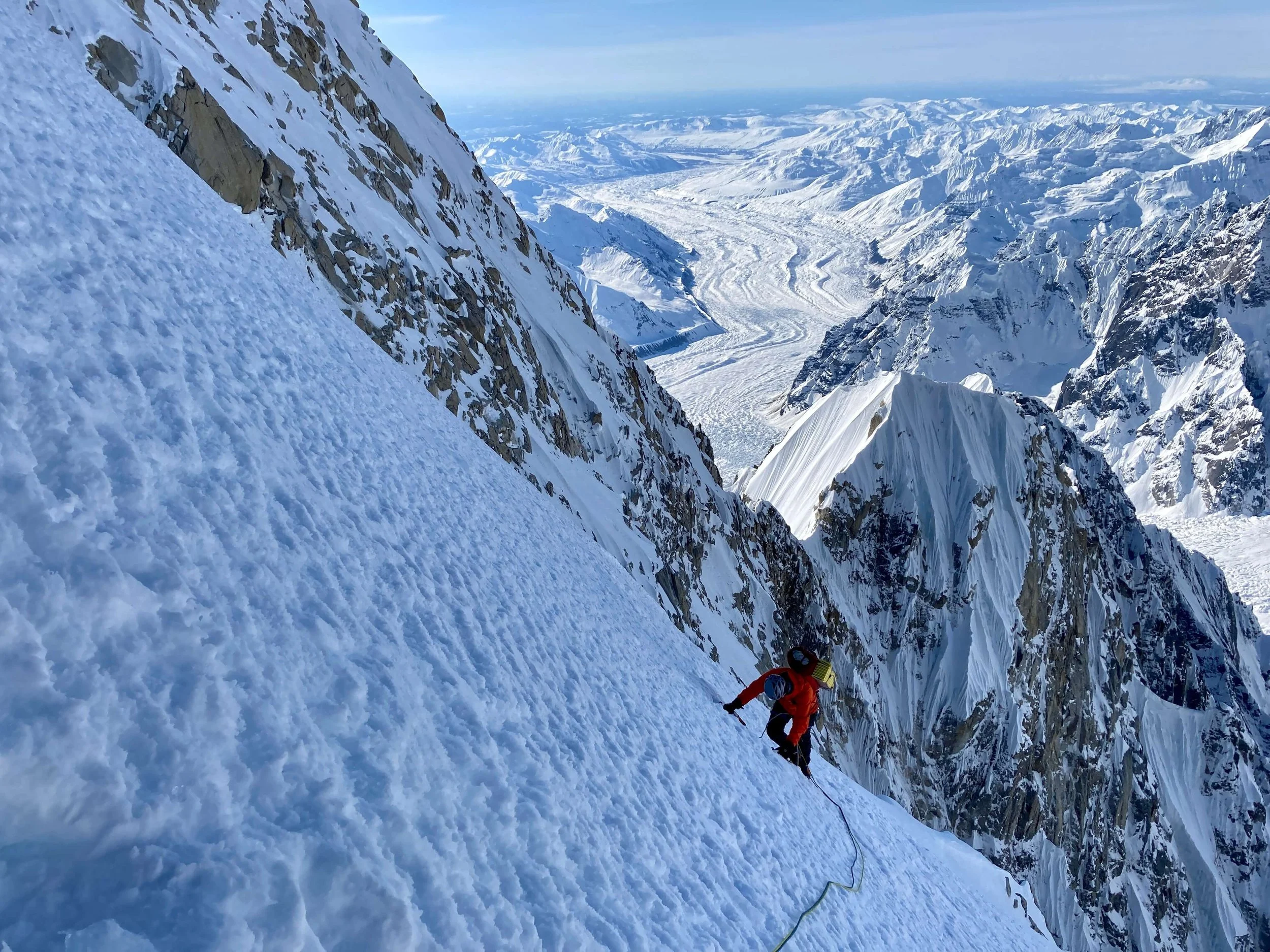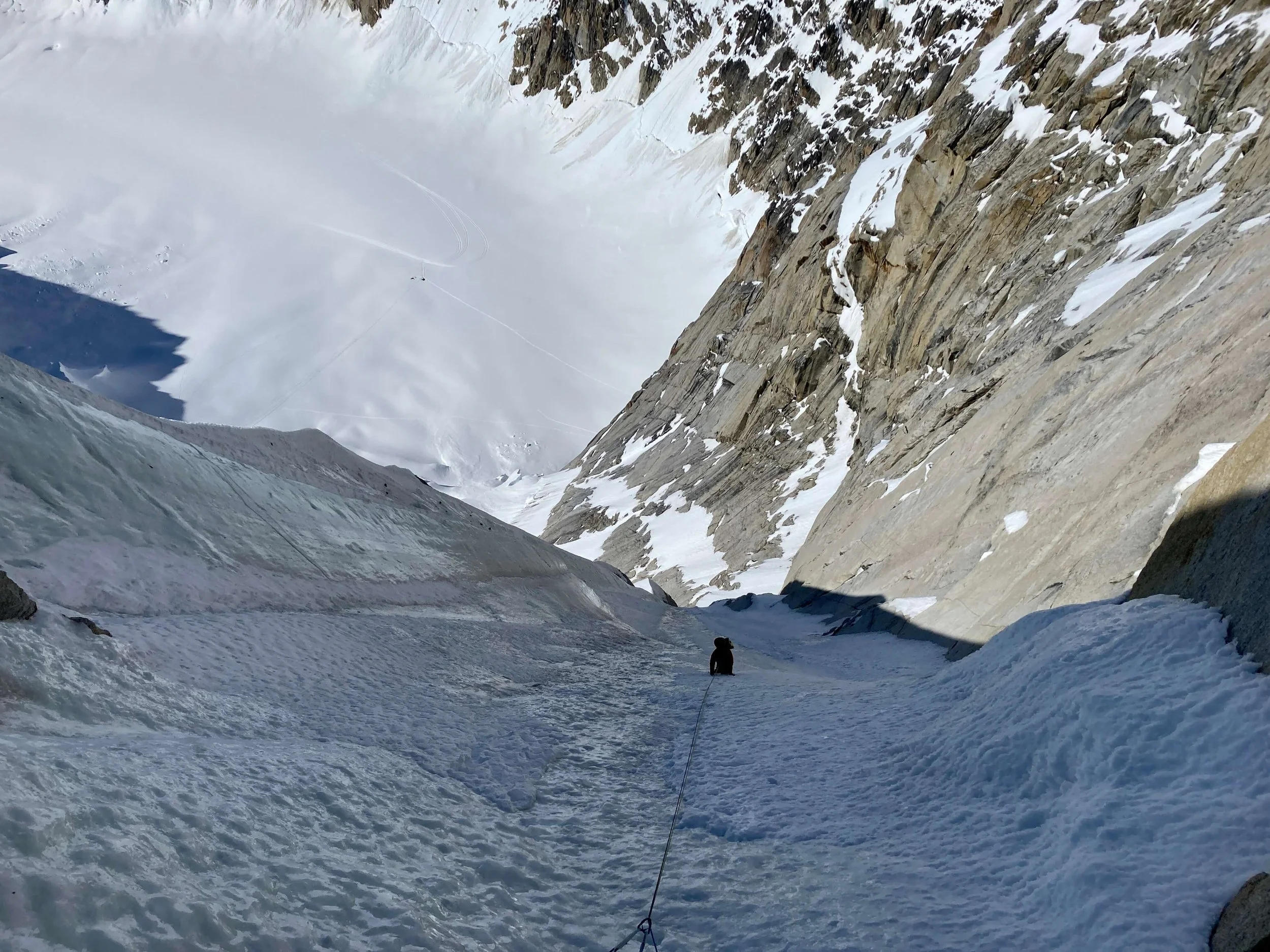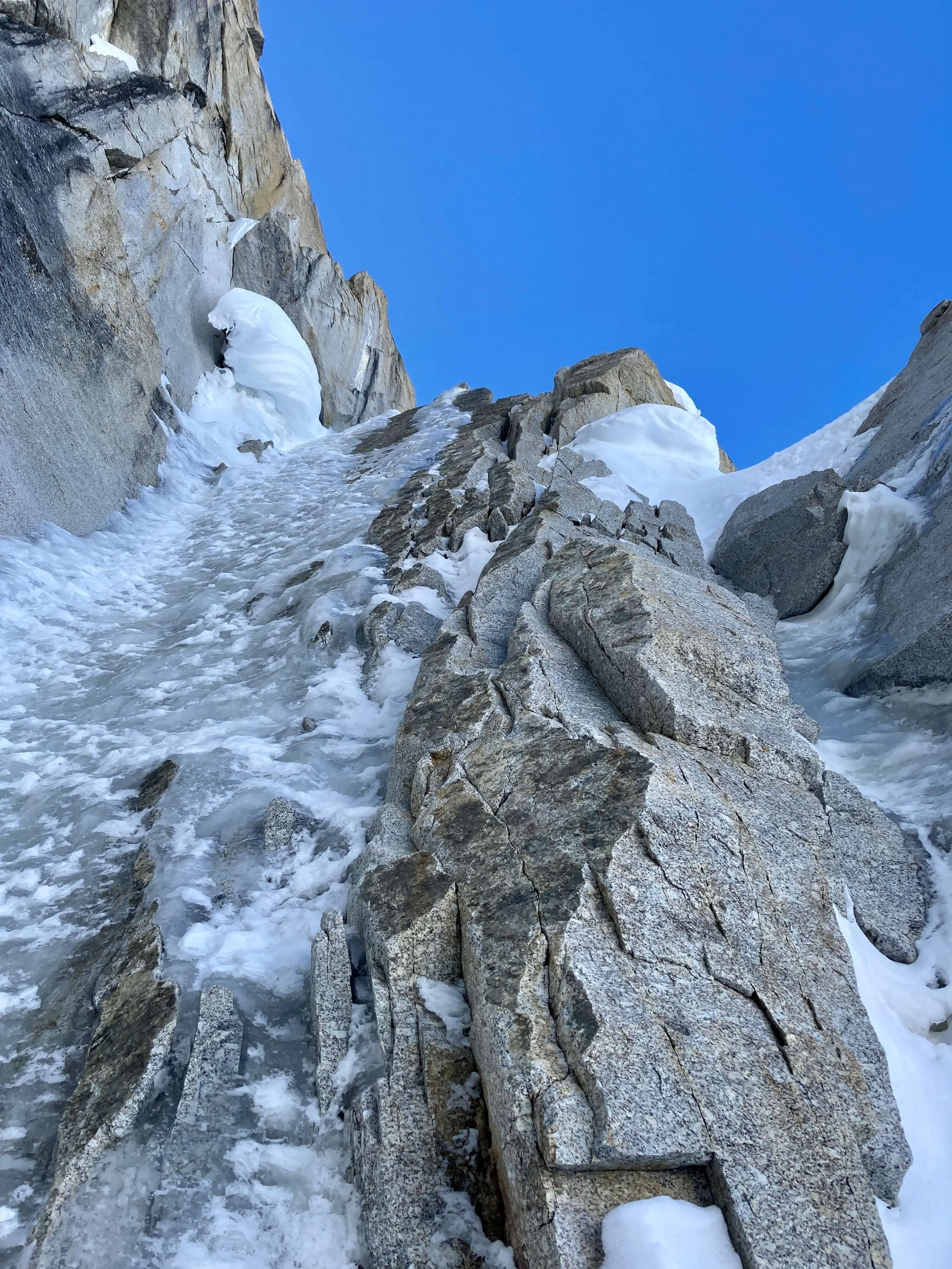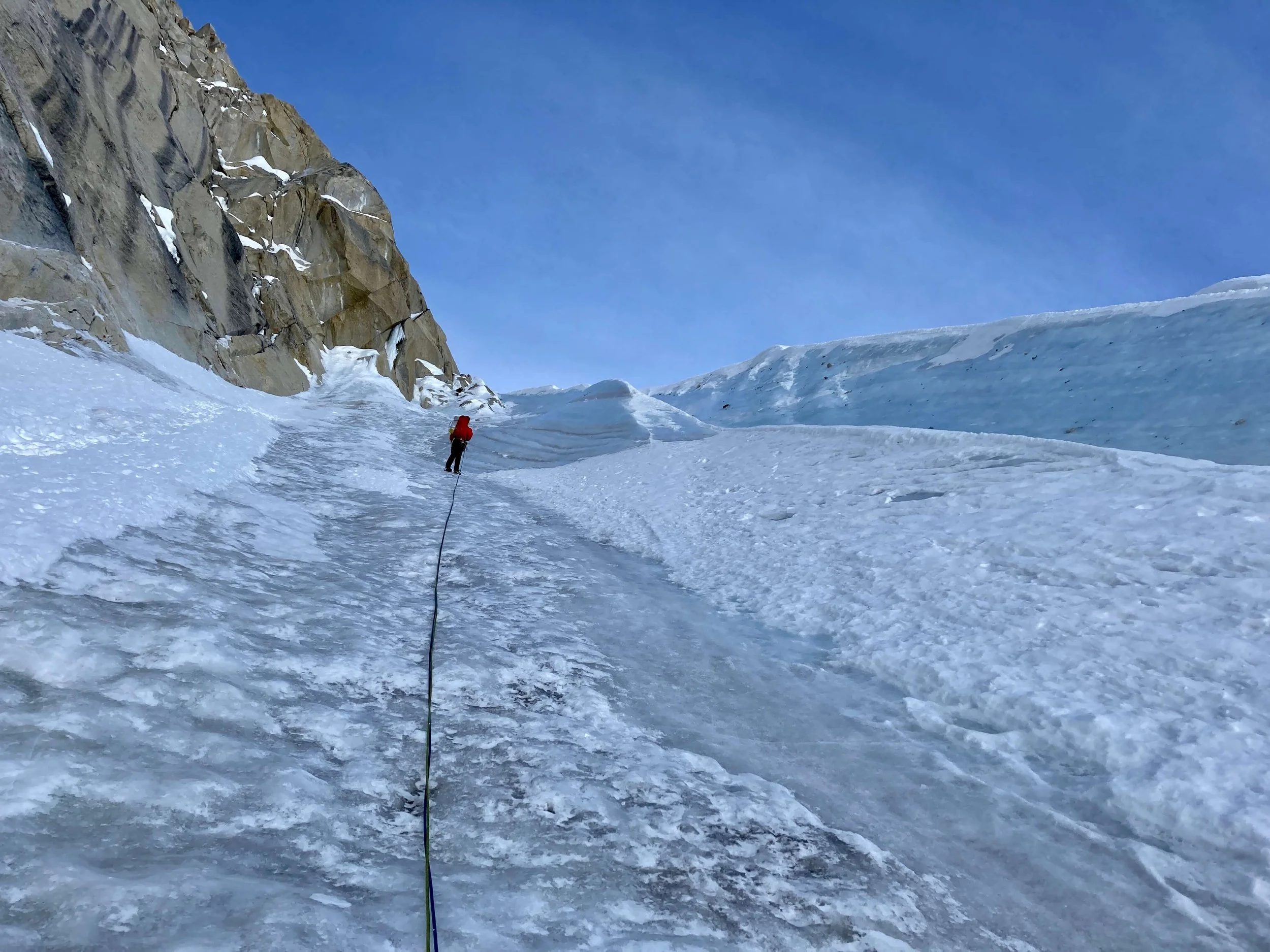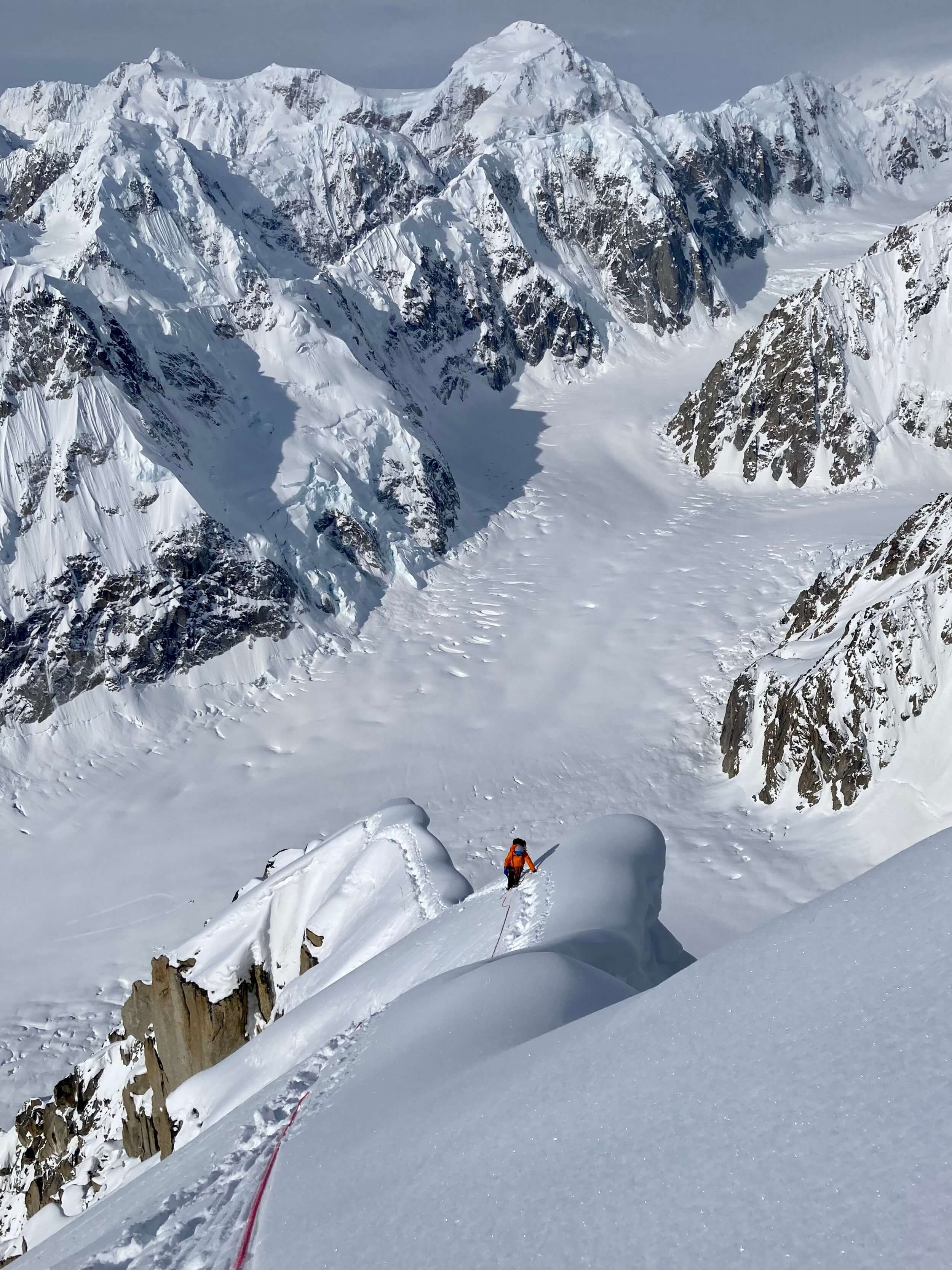
The West Face Couloir On Mt. Huntington
An alpinist’s test-piece: climb the West Face Couloir to the summit of Mount Huntington. An iconic mountain in the Alaska Range with no easy way to the summit, Mount Huntington’s steep walls on all sides makes for challenging climbing and dramatic views. The West Face Couloir on Mt. Huntington is regarded as an aesthetic and direct line and though it may be the easiest route on the peak, it’s hardly an easy objective. An ascent of Mt. Huntington by any route is certainly a marquee achievement for an alpinist. The West Face Couloir is defined by sustained steep snow climbing and calf-burning moderate ice climbing up a ramp system splitting the sheer West Face of Mt. Huntington. It is a major step up in length and overall difficulty from other popular guided routes in the Alaska Range, such as Ham and Eggs or Peak 11,300.
Mt. Huntington was first climbed in 1964 by the the famous alpinist, Lionel Terray via the Northwest Ridge, now commonly referred to as the French Ridge - it is arguably the most aesthetic ridgeline in Alaska. Since the first ascent of the West Face Couloir in 1989 by Dave Nettle and James Quirk, it has quickly become the standard route to the summit of Mt. Huntington. Much like the multiple First Ascent attempts of the West Face Couloir, climbers are quick to descend from the top of the technical difficulties where the route joins with the Harvard Route. Skyward Mountaineering still believes in the importance of summits: we strive to help climbers adequately prepare for the requisite fitness and efficient climbing and transitions to successfully climb all the way to the summit and return in good style.

Advanced technical ice climbing and steep snow
M4, AI4, 70°, V
Previous multi-day alpine climbing experience required
Climbers must be efficient WI4 climbers with a high level of fitness
8 day itinerary (Anchorage to Anchorage)
The climb typically takes 2-3 days, basecamp to basecamp
Denali National Park
Mount Huntington
12,241 ft / 3,444 m
Climb Mount Huntington
-
The West Face Couloir sits directly above our basecamp on the West Fork of the Tokositna Glacier. An hour of snow climbing and crevasse navigation leads to the first crux: crossing the bergschrund. The steep snow face above is about 800ft of sustained snow climbing with a S-curve at the top to navigate a rock band. This leads to the base of Mount Huntington’s West Face Couloir ramp system, an optional, exposed bivy location exists here. The first two ice pitches are the steepest around 80° of AI4, followed by more moderately angled ice along the ramp for around 10 pitches that will test your efficiency and calf strength.
Above the ramp there are a few optional bivy spots, though these are vary each season. The next few pitches traverse right over steep snow and short steps of moderate mixed climbing. The Summit Ice Field is comprised of multiple pitches of steep and sustained snow and ice climbing leading to the summit ridge. This Summit Ice Field traverses the exposed corniced ridge, quickly joining with the French Ridge, and requiring climbers to tackle one final crux on the Summit Headwall: 1-2 pitches of flutted ice climbing culminating atop the rewarding summit of Mount Huntington. We descend the same route back, with some downclimbing and lots of rappelling. This descent is no trivial task and requires climbers be efficient navigating over rocky cliff bands and hanging belays on sustained pitches of smooth ice.
-
As with all expedition alpine climbing, it is necessary to have some flexibility and be understanding that weather and conditions dictate the schedule.
Our first day can be a jam-packed whirlwind. Your guide will pick you up from the airport or your hotel in Anchorage and transport you to the town of Talkeetna, a 2 hour drive. After organizing equipment and weighing gear for the flight manifest we play the “hurry up and wait” game for a flight into the mountains. We’ve been using the highly reputable Talkeetna Air Taxi for almost 30 years and fully trust their pilots, we wouldn’t fly with anyone else! The flight into the Alaska Range is incredible, a highlight of all trips. We land on the remote West Fork of the Tokositna glacier, directly below the West Face of Mt. Huntington. We’ll set up basecamp just a short walk from where we land.
Depending on conditions, we may opt to recon the entrance pitches to the route on day 2 or let snow settle from recent storms. We may also climb the snow ramp to a bivy ledge below the ice ramp to set us up for success as a day climb to the summit and back. It is also possible to bivy higher on the route above the ice ramp or at the summit boulder, a small perch in the middle of the summit icefield, just before the ridge. This climb is a substantial step up in difficulty from other popular guided objectives in the Alaska Range, such as Ham and Eggs or Peak 11,300. The route is sustained and requires a high level of fitness and efficiency to climb it quickly enough as there are few rest opportunities on route. We have several extra days built into the itinerary to allow for stormy weather to settle to set you up for success.

